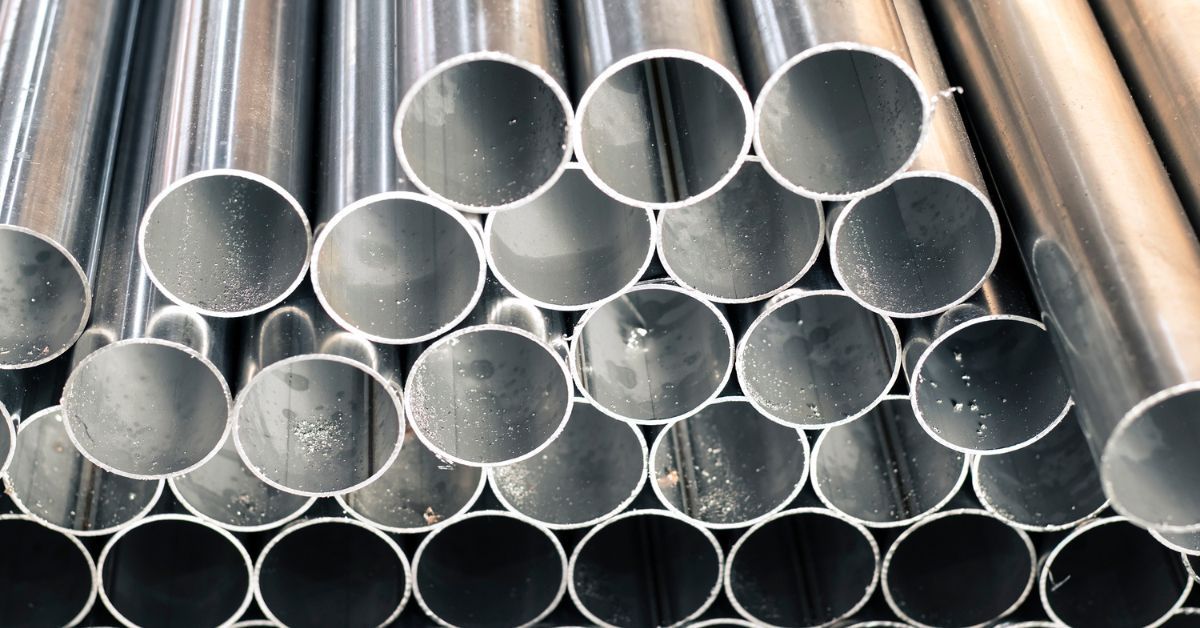6 Different Applications for Stainless Steel Tubing

Stainless steel tubing is a marvel of modern engineering, combining strength, durability, and resistance to corrosion. Made from an alloy of iron, carbon, and other elements such as chromium, stainless steel has revolutionized various industries due to its impressive properties. The addition of chromium enhances the material’s ability to resist rust and stains, making it a go-to option for environments where hygiene and longevity are paramount. Stainless steel tubing, in particular, offers a versatile solution for numerous applications, both industrial and commercial. Continue reading for an in-depth exploration of six different applications for stainless steel tubing.
Importance of Stainless Steel Tubing
Stainless steel tubing is incredibly versatile. Its unique properties make it suitable for several applications, from construction to aerospace. Its durability is one of its most notable features, allowing it to withstand extreme temperatures and harsh environmental conditions. Additionally, stainless steel tubing is easy to clean and maintain. Therefore, it’s a great option for applications where hygiene is critical. Its aesthetic appeal also makes it a popular choice for architectural designs. Stainless steel tubing proves to be an invaluable component in various sectors, whether it’s for structural support or as part of intricate machinery.
Applications in Construction
Stainless steel tubing plays a crucial role in building robust structures in the construction industry. Its high tensile strength makes it ideal for supporting heavy loads, while its corrosion resistance ensures long-lasting performance. Architects and builders often use stainless steel tubing in the framework of buildings, bridges, and other infrastructure projects. Many also favor it for its sleek, modern appearance, which adds an element of sophistication to architectural designs. Furthermore, stainless steel tubing is often ideal for railings, handrails, and even decorative elements, providing both functionality and aesthetic appeal.
Role in Industrial Settings
Stainless steel tubing is indispensable in industrial settings, where it’s commonplace in machinery, equipment, and processing plants. Its ability to withstand high pressures and temperatures makes it suitable for chemical manufacturing, oil and gas refineries, and power generation facilities. The tubing’s resistance to corrosion and chemical reactions ensures it maintains its integrity even in the most demanding environments. Stainless steel tubing often transports gases, liquids, and other materials, playing a critical role in the smooth operation of industrial processes.
Medical and Pharmaceutical Usage
The medical and pharmaceutical industries demand materials that meet the highest standards of hygiene and safety, making stainless steel tubing an ideal choice. Stainless steel tubing provides a durable and sterile solution for medical equipment, such as surgical instruments, hospital beds, and diagnostic machines. Its non-reactive nature ensures that it does not interfere with medical procedures or contaminate pharmaceutical products. Additionally, the production of medical implants and prosthetics often involves stainless steel tubing, providing strength and biocompatibility essential for patient safety and well-being.
Food and Beverage Industry Applications
Stainless steel tubing is essential for maintaining hygiene and ensuring the quality of products in the food and beverage industry. Its resistance to corrosion and ease of cleaning makes it suitable for use in food processing equipment, storage tanks, and transportation systems. Stainless steel tubing prevents contamination and helps maintain the taste and quality of food and beverages. Tubing is essential in various stages of production, from mixing and cooking to packaging and distribution. The material’s durability also ensures that equipment lasts longer, reducing maintenance costs and downtime.
Impact on Automotive and Aerospace Sectors
Stainless steel tubing is pivotal in the automotive and aerospace sectors, where performance and reliability are critical. Exhaust systems, fuel lines, and hydraulic systems rely on stainless steel tubing in the automotive industry, providing resistance to heat and corrosion. It enhances vehicle performance and longevity, making it a preferred choice for manufacturers. The aerospace sector uses stainless steel tubing in aircraft components, such as fuel and hydraulic lines, due to its ability to withstand extreme temperatures and pressures. Its lightweight yet strong nature contributes to an aircraft’s efficiency and safety.
Use in Utilities and Energy
The utilities and energy sectors benefit significantly from stainless steel tubing. Power plants use stainless steel tubing in boilers, heat exchangers, and condensers, which aids in efficient heat transfers. Its corrosion resistance ensures longevity and reliability in energy production. The oil and gas industry uses stainless steel tubing for pipelines, drilling rigs, and offshore platforms, where it must withstand harsh environmental conditions and high pressures. The material’s durability and resistance to chemical reactions make it suitable for transporting and storing various forms of energy.
Cutting-Edge Technology
Stainless steel tubing is also making its mark in cutting-edge technologies and innovations. Stainless steel tubing provides structural support and durability in renewable energy systems, such as solar panels and wind turbines. Its resistance to extreme weather conditions ensures the longevity of these systems. The biotechnology sector uses stainless steel tubing to produce medical devices and diagnostic equipment. Its non-reactive nature and ease of sterilization make it suitable for advanced medical applications. Stainless steel tubing will remain a crucial component in innovative solutions as technology evolves.
Sustainable Benefits
Its sustainability is one of the most significant advantages of stainless steel tubing. Stainless steel is 100% recyclable, making it an environmentally friendly choice for various applications. The material’s long lifespan reduces the need for frequent replacements, minimizing waste and resource consumption. Additionally, stainless steel production has become more energy-efficient, reducing its environmental impact. Businesses and industries can contribute to a more sustainable future while benefiting from its exceptional properties by choosing stainless steel tubing.
A Key Player in Innovative Solutions
Stainless steel tubing is a versatile, durable, and sustainable material applicable to numerous industries. Its unique properties make it an invaluable component in modern engineering and design, from construction and industrial settings to medical and pharmaceutical applications. Stainless steel tubing will remain a key player in innovative solutions as technology advances. Its environmental benefits further enhance its appeal, making it a smart choice for businesses and industries committed to sustainability.
At CMPI, we can help you explore the different applications for stainless steel tubing and discover how it can revolutionize your projects and operations. Using hand tools and unique in-house machinery, our custom stainless steel tubing services will match your exact specifications. Get in touch today to learn more about how we can help if you’re looking for perfectly polished stainless tubes, large and small.



